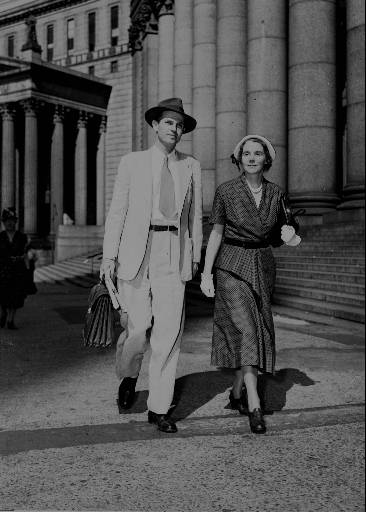Perjury
Under federal law, perjury is committed when a person “knowingly” attests to or subscribes to statements he or she does not believe are true. Perjured testimony is not protected by the First

Amendment, because it undermines the ability of courts to obtain truthful testimony and to effectively administer justice.
Perjury must be knowingly committed and influence a proceeding’s outcome to be punished
Perjury charges may be brought against individuals who swear or affirm that they will tell the truth and then lie instead. If, however, witnesses were unaware that the stated facts had changed or were different, they merely supplied mistaken observations rather than perjured testimony.
Under perjury law, not only must the speaker make a false statement, but the statement must be of such magnitude that it influences an official proceeding’s outcome. A false statement given under oath relating to a minor or an immaterial matter is not perjury, even though the statement could be deemed a lie, because perjury law is centered on protecting the credibility of official proceedings. Punishing everyone who makes a misstatement would be time-consuming and would not serve the purpose of upholding the integrity of legal processes.
Misleading and evasive statements alone do not meet the false statement requirement
Bronston v. United States (1973) illustrated the complexity of meeting the “false statement” requirement. At issue was whether perjury occurs when witnesses under oath state literal truths but are unresponsive or misleading in response to questions.
In this case, businessman Samuel Bronston was asked whether he currently had bank accounts in Swiss banks; he replied “no.” Then, when asked if he had ever had any bank accounts there, he stated that the company had had an account for six months in Zurich. The literal truth was that Bronston had had a personal Swiss bank account for five years, but Bronston addressed his company’s assets, not his own. Technically his answer to the first question was true because he previously had held a Swiss bank account, but at the time of questioning he did not. Later he was tried and convicted for perjury.
However, in a decision written by Chief Justice Warren Earl Burger, the Supreme Court reversed his conviction, holding that although Bronston may have knowingly misled, his statements were literally true. If a line of questioning is ambiguous, the answers given will not support a perjury conviction. Although Bronston made misleading and evasive statements, this alone is not sufficient to meet the false statement requirement.
Clinton Administration shows difficulty of justifying perjury prosecution
A 1998 perjury charge related to the impeachment of President Bill Clinton further demonstrates how difficult it is to justify a perjury prosecution. Experts argue over whether President Clinton perjured himself when testifying before the grand jury about his relationship with former White House intern Monica Lewinsky. The law draws a line between lying and perjury.
Ultimately whether the president had “sexual relations” with Lewinsky became the center of Paula Jones’s sexual harassment lawsuit against Clinton. Clinton’s denial that he had had “sexual relations” with Lewinsky gave rise to accusations that he lied under oath and obstructed justice. He was ultimately impeached in the U.S. House of Representatives for perjury and obstruction of justice in the Jones case but was not convicted in the U.S. Senate.
Many claim that he was prosecuted for perjury for political reasons and that most citizens would rarely be charged with perjury over matters such as this. The evidence shows, however, that ordinary citizens are prosecuted for “small lies,” and a number have been convicted of perjury for lying about sexual affairs. Still, many high-profile cases demonstrate that prosecuting perjury is not easy because of the legal standards imposed in the Bronston case.
This article was originally published in 2009. Ruth Ann Strickland was a professor at Appalachian State University.
cited https://mtsu.edu/first-amendment/article/1007/perjury
To Learn More…. Read MORE Below and click the links
Learn More About True Threats Here below….
We also have the The Brandenburg v. Ohio (1969) – 1st Amendment
CURRENT TEST = We also have the The ‘Brandenburg test’ for incitement to violence – 1st Amendment
We also have the The Incitement to Imminent Lawless Action Test– 1st Amendment
We also have the True Threats – Virginia v. Black is most comprehensive Supreme Court definition – 1st Amendment
We also have the Watts v. United States – True Threat Test – 1st Amendment
We also have theClear and Present Danger Test – 1st Amendment
We also have theGravity of the Evil Test – 1st Amendment
We also have the Elonis v. United States (2015) – Threats – 1st Amendment
Learn More About What is Obscene….
We also have the Miller v. California – 3 Prong Obscenity Test (Miller Test) – 1st Amendment
We also have the Obscenity and Pornography – 1st Amendment
Learn More About Police, The Government Officials and You….
We also have theBrayshaw v. City of Tallahassee – 1st Amendment – Posting Police Address
We also have thePublius v. Boyer-Vine –1st Amendment – Posting Police Address
We also have the Lozman v. City of Riviera Beach, Florida (2018) – 1st Amendment – Retaliatory Police Arrests
We also have the Nieves v. Bartlett (2019) – 1st Amendment – Retaliatory Police Arrests
We also have the Freedom of the Press – Flyers, Newspaper, Leaflets, Peaceful Assembly – 1st Amendment
We also have the Insulting letters to politician’s home are constitutionally protected, unless they are ‘true threats’ – 1st Amendment
We also have the Introducing TEXT & EMAILDigital Evidencein California Courts – 1st Amendment
We also have the First Amendment Encyclopedia very comprehensive – 1st Amendment
ARE PEOPLE LYING ON YOU? CAN YOU PROVE IT? IF YES…. THEN YOU ARE IN LUCK!
We also have the Penal Code 118 PC – California Penalty of “Perjury” Law
We also have theFederal Perjury – Definition by Law
We also have the Penal Code 132 PC – Offering False Evidence
We also have the Penal Code 134 PC – Preparing False Evidence
We also have thePenal Code 118.1 PC – Police Officers Filing False Reports
We also have the Spencer v. Peters– Police Fabrication of Evidence – 14th Amendment
We also have the Penal Code 148.5 PC – Making a False Police Report in California
We also have the Penal Code 115 PC – Filing a False Document in California
Know Your Rights Click Here (must read!)
Under 42 U.S.C. $ection 1983 – Recoverable Damage$
42 U.S. Code § 1983– Civil Action for Deprivation of Right$
$ection 1983 Lawsuit – How to Bring a Civil Rights Claim
18 U.S. Code § 242 – Deprivation of Right$ Under Color of Law
18 U.S. Code § 241 – Conspiracy against Right$
$uing for Misconduct – Know More of Your Right$
Police Misconduct in California – How to Bring a Lawsuit
New Supreme Court Ruling – makes it easier to sue police
RELATIONSHIPWITH YOURCHILDREN& YOURCONSTITUIONAL RIGHT$ + RULING$
YOU CANNOT GET BACK TIME BUT YOU CAN HIT THOSE PUNKS WHERE THEY WILL FEEL YOU = THEIR BANK
We also have the 9.3 Section 1983 Claim Against Defendant as (Individuals) — 14th Amendment thisCODE PROTECTS all US CITIZENS
We also have the Amdt5.4.5.6.2 – Parental and Children’s Rights 5th Amendment thisCODE PROTECTS all US CITIZENS
We also have the 9.32 – Interference with Parent / Child Relationship – 14th Amendment thisCODE PROTECTS all US CITIZENS
We also have the California Civil Code Section 52.1Interference with exercise or enjoyment of individual rights
We also have the Parent’s Rights & Children’s Bill of RightsSCOTUS RULINGS FOR YOUR PARENT RIGHTS
We also have a SEARCH of our site for all articles relatingfor PARENTS RIGHTS Help!
Contesting / Appeal an Order / Judgment / Charge
Options to Appealing– Fighting A Judgment Without Filing An Appeal Settlement Or Mediation
Cal. Code Civ. Proc. § 1008 Motion to Reconsider
Penal Code 1385 – Dismissal of the Action for Want of Prosecution or Otherwise
Penal Code 1538.5 – Motion To Suppress Evidence in a California Criminal Case
CACI No. 1501 – Wrongful Use of Civil Proceedings
Penal Code “995 Motions” in California – Motion to Dismiss
WIC § 700.1 – If Court Grants Motion to Suppress as Evidence
 Epic Criminal / Civil Rights SCOTUS Help – Click Here
Epic Criminal / Civil Rights SCOTUS Help – Click Here
 Epic Parents SCOTUS Ruling – Parental Rights Help – Click Here
Epic Parents SCOTUS Ruling – Parental Rights Help – Click Here
